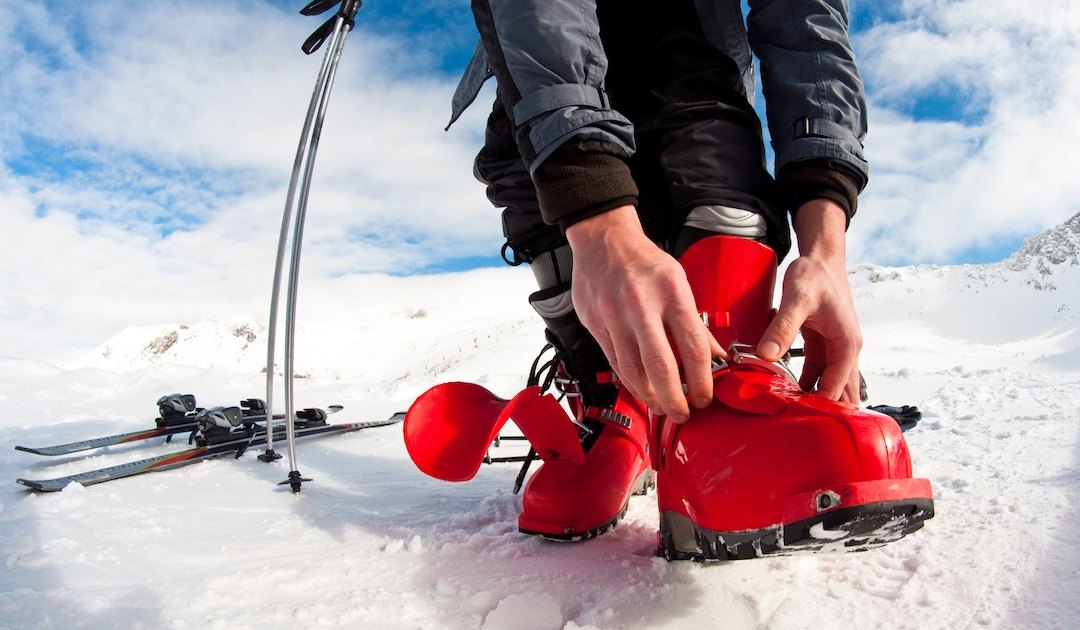No products in the cart.
Fitness Tips
Seven Rules for Buying Ski Boots Online
With spring in the air, it might not feel right, but now is the best time to buy new ski gear. Just about everything snow-related is on sale to make room for summer gear and prepare for next year’s latest and greatest. Some of the best deals are on ski boots.
After a record winter sales season, the pickings will be slim at most brick and mortar shops. A better bet is at online retailers (notably those with some premium brand selection, such as REI, Backcountry.com, and Evo). With their hard plastic shells, it may seem risky to buy ski boots without trying them on, but with expert guidance, it is possible for the 30 percent discounts to be worth every penny.
“I wouldn’t shy away from going to a boot fitter if have hard-to-fit feet,” says Mikell Bova, a ski boot advisor for online gear retailer Backcountry.com. “But most people can find a properly fitting boot online.”
Bova, who used to work as a boot fitter in a physical store, says it’s worth taking advantage of the spring deals to get a better pair of boots, rather than splurging on other gear.
“Skis get all the glory, but boots are more important overall,” he says. “A properly fitting boot will make you a better skier. A new pair of skis probably won’t.”
Bova says there are seven steps to better boot buying.

1. Start with the brand
Fit is key to performance, warmth and comfort, says Bova. Helping someone get it right starts with the skis boots they’re skiing in now, he says. Each brand has unique lasts (the mold used to shape the shell and liner). For example, Bova’s feet fit Lange’s wide forefoot and narrow heel best, while he says Nordica is usually higher volume throughout and Tecnica are lower volume. Within their boot lines, brands often have different fits. Last widths, measured in millimeters, vary from the low 90s to 104 millimeters. Consider anything under 98 as narrow, over 102 as wide and in between as average. Some brands, like Salomon and Atomic, also vary the volume, best thought of as the height of the arch (HV for high volume and LV for low volume).
2. Consider your use
Where will you ski? Manufacturers make boots for every possible niche of the ski world, from super-light for running uphill to precision power transfer on the race course. Each involves compromises, says Bova, so be honest about how you will use the boots. Backcountry skiers will want a walk mode and tech inserts, pins at the toe and heel for fitting into touring bindings. For a dedicated on hill carving boot, four buckles and a stiffer flex are more important.
3. Flex is key
This is a crucial variable when it comes to ski performance. Boot flex measures the resistance to forward compression in a boot. Many skiers buy too stiff a boot, which limits their ability to bend at the ankle and thus properly steer a ski. Finding your ideal flex is a bit of a black art that combines weight, height, ski style and ability and personal preference. Bova recommends experts and advanced skiers buy boots in the 90 to 130 flex range, and intermediate and beginner skiers focus in the 70 to 100 range. Heavier, taller and more aggressive skiers will want flexes in the upper end, while lighter, shorter and more finesse skiers will want to be in the lower end.
4. Get picky
Features can make a difference to fit and function, says Bova. Splurge on a heat moldable liner, which is easy to custom shape to your feet at home. More buckles can help customize the fit further, but add weight. If you want to get geeky, some boots come with adjustments for foot and boot angle.

5. Order two
If you can afford the credit card hit, order two sizes. Most online retailers have easy return policies and it will save you time finding the right boot. Read reviews to get a sense for how the boots fit compared to standard shoe sizes and pick the two half-sizes on either side.
6. Try them on
When the boots arrive, pull the liner out and step into the empty shell. Slide your foot all the way forward until your toe is brushing the front of the boot. For a good fit, you should be able to just fit two fingers behind your heel. Slide the foot to one side: You should be able to get one finger between your foot and the shell. If you don’t have enough room send them back. (If you have the option, this is when you should heat mold your boots.) With the liner in the shell, tighten the boots up snug. “They should fit like a firm handshake,” says Bova says. Wear them around the house (for an hour, three or four times).
7. Don’t be afraid of the fitter
Go skiing in them a couple times. Don’t be surprised if they’re a little painful at first, but it should be bearable. If they’re still causing you grief or there are particular pain points, take them to a good boot fitter. They have a range of ways to shape boots. This is often free if you buy the boots in store, but Bavo says it’s worth paying for. “It’s usually cheaper to buy boots online and pay a ski shop to work on them to get the perfect fit,” he says.
For access to exclusive gear videos, celebrity interviews, and more, subscribe on YouTube!
Source link

